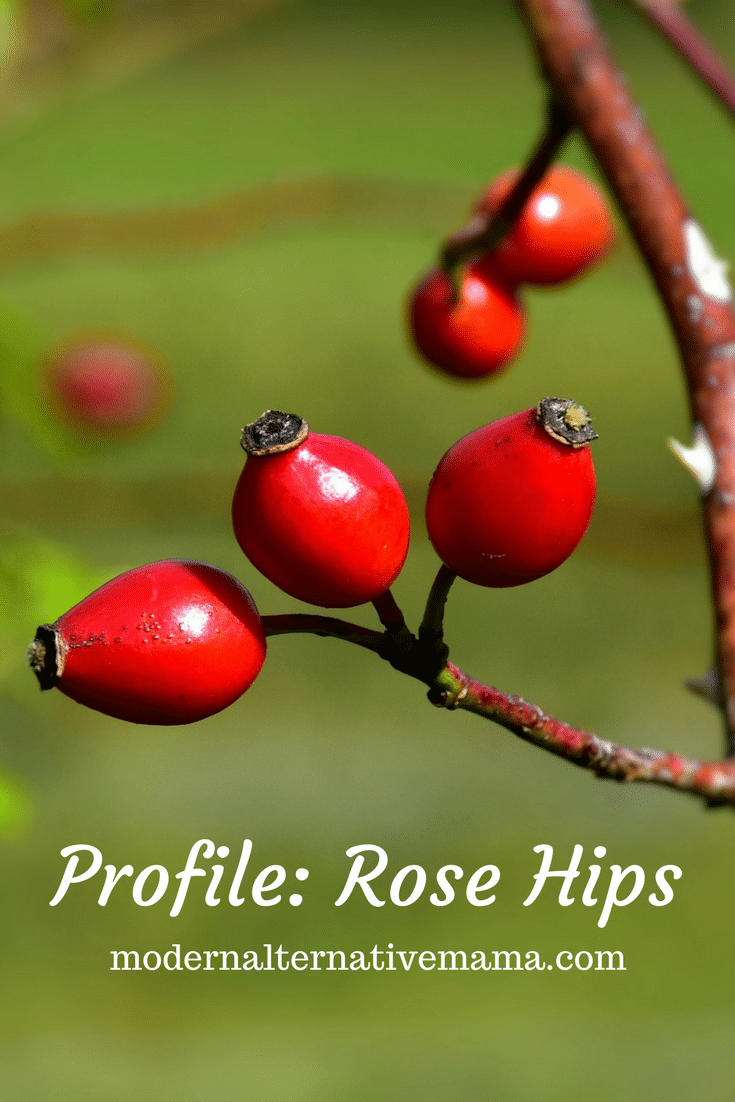Discover more about this amazing plant, flower, and vitamin C powerhouse.
By Danielle, contributing writer
No, they are not the rounder part of the lovely rose – they are an essential part and a nutrient-packed plant.
What are Rose Hips?
Rose hips are also known as brier rose, dog brier, rose, haw or dog rose, and are from the rosaceae (think rose) plant family. After the flower drops off a rose, rose hips will normally appear as round berries in the flower’s place. Rose hips are typically red, but may be a purple or black color. They are seen in early summer and ripen through autumn. Rose hips are famous for holding the highest amount of naturally-available vitamin C.
How to Grow and Get Them
How to Grow Them: Some of roses have been bred to no longer create rose hips. You will need to do some searching if you wish to buy seed and grow them yourself. You can plant more rose bushes which will produce rose hips from rose hips on your current plants. More instructions on how to grow a new rose bush from a rose hip can be found here. Be sure to purchase heirloom (and organic if possible) rose seeds to grow your own rose hips [here’s one site that sells them].
Where to Buy Them: If you aren’t a gardener, you can purchase rose hips online [here in bulk]. Rose hip seed oil has been used for millennium for beauty needs, and can be purchased here. And Rose Hips tea can actually be found in most stores under the Traditional Medicinals brand [link].
Uses for Rose Hips
- Teas – Rose hips have been used in teas since the beginning of time (see Rose Hip Tea recipe below).
- Beauty and hygiene – Roses, rose water and rose hip seed oil have been used to promote beauty in skincare products extensively.
- Sweet Treats – The sweet hips are also a popular ingredient for jams, jellies, and marmalades (See Rose Hip Jam recipe below). Northern European countries have used the berry in soups (nyponsoppa in Sweden) and even mead.
- Vitamin C – Rose hips have the most naturally-occurring vitamin C available from a plant. You can get the benefit of this by drinking rose hip tea, adding them to smoothies or treats, in jams and jellies (find a recipe below!), and even in skin creams for burns and bruises.
- Phytochemicals – These little berries are loaded with lutein, lycopene, and beta-carotene – strong anti-inflammatories that help lower oxidation in the body.
Rose Hip Recipes
Rose Hip Tea
- One cup: Combine 1 teaspoon loose rose hips (or crushed) in a tea ball, spoon, or cloth tea bag. Allow to sit in boiled water for 5-8 minutes, and cool slightly before enjoying.
- 8 cup tea all-day decoction: Put 2 tablespoons of rose hips in a half gallon mason jar. Boil 8 cups of water and place into the jar. Close jar, and leave on the counter for 6 or more hours. Consume warm or cold, and put in the refrigerator until consumed after it’s first opened.
*A decoction is a way of making tea, usually a larger quantity, that allows the herbal matter to sit in warm water for an extended period of time. It is often used to make a large amount of tea in the morning that will be ready for the evening.
Rose Hip Jam
This jam recipe makes six 8 ounce jars of rose hip jam.
Ingredients
- 6 8-ounce mason jars and lids
- 4 cups of chopped fresh rose hips
- 1 large orange
- 1 organic apple or pear
- 5 cups of coconut sugar or sugar of choice (do not use Stevia)
- 2 lemons, juiced
- 6 cups of filtered water
Instructions
- Prepare your mason jars and lids for canning by boiling in water for 20 minutes to sterilize, then place aside.
- Grab your pear or apple and orange. Peel both, and chop into 1/4 inch chunks.
- Place the rose hips, apple or pear, and orange along with the lemon juice and water in a large saucepan. Bring to a boil for about 25 minutes, until all fruits are soft.
- Now, add the sugar, stirring slowly until the sugar is entirely dissolved while keeping the mixture to a boil.
- Remove from heat and pour into sterilized jars. Cover, and boil jars to seal in the water bath for 5 minutes.
- Remove the jars from the water bath, and allow to cool overnight. Store in a dry, dark place for up to one year.








How do you harvest rose hips? Are the hips from any variety of roses ok to use? Do they need to be dried first?
Thank you!